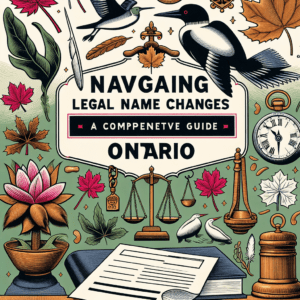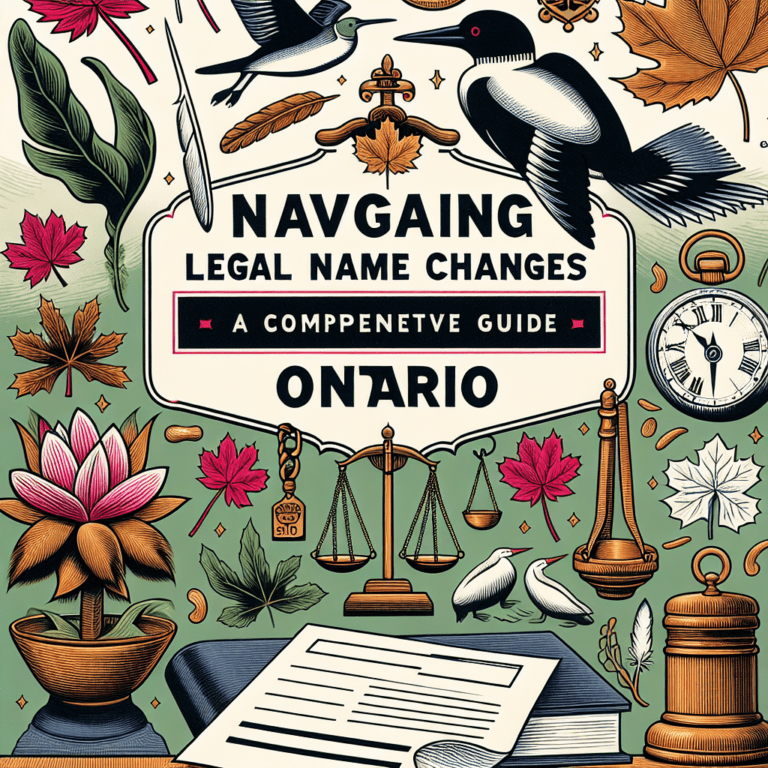Understanding the legal name change process can feel daunting, especially when emotions run high due to personal identity transformations, marriage, or divorce. You may find yourself overwhelmed, wondering where to start and what steps to follow to ensure a smooth transition. This comprehensive guide aims to illuminate the intricate legal name change process, addressing your concerns and providing expert-level insights to empower you on this journey.
Navigating the legal name change process involves several crucial steps to ensure that your new name becomes recognized legally. Initially, it is essential to determine your eligibility for a name change. Most jurisdictions allow name changes under various circumstances, including marriage, divorce, or personal preference. Researching local laws can save you time and effort, as requirements vary significantly depending on where you reside.
Once you establish your eligibility, the next critical step is to gather the necessary documentation. This typically includes proof of identity, such as a birth certificate or government-issued ID, and any documents that support your name change request, such as a marriage certificate or divorce decree. Organizing these documents upfront will streamline your application process and minimize the risk of delays.
With your documents in hand, you can now file the name change petition. This involves completing specific forms and submitting them to your local court. Pay careful attention to local court rules, as some regions require notice to be published in a newspaper, while others may necessitate a hearing. Ensuring that you meet all procedural requirements will facilitate a seamless transition to your new name.
Navigating the Legal Name Change Process: Key Steps Explained
When embarking on your name change journey, it’s essential to understand the legal implications and processes involved. After filing your petition, you may need to attend a court hearing, depending on your jurisdiction. During the hearing, a judge will review your application and may ask questions regarding your reasons for the name change. Being prepared with clear and honest responses can significantly influence the outcome. If the judge approves your request, you’ll receive a court order that legally recognizes your new name.
Once you have the court order in hand, the next step is updating your identification and official records. This includes changing your name on your Social Security card, driver’s license, passport, bank accounts, and other government documents. Each agency has its own procedures for name changes, so it’s crucial to follow their guidelines meticulously. Many require a copy of the court order, along with their specific forms and identification.
It’s important to consider the potential implications of your name change on other aspects of your life. For instance, if you have children, think about how this change may affect their names and legal documents. Furthermore, keep in mind any potential impacts on professional documents and social media accounts. Communicating your name change to friends, family, and colleagues can also help ease any transition and ensure that everyone is aware of your new identity moving forward.
Essential Tips and Considerations for Your Name Change Journey
As you navigate the name change process, it’s invaluable to keep a few essential tips in mind to ensure a successful transition. First, allow yourself plenty of time for the entire process. While some aspects are straightforward, others might require waiting for court dates or processing times at various agencies. Setting a realistic timeline can help you manage your expectations and avoid unnecessary stress.
Another insider tactic is to maintain copies of all documents related to your name change. This includes your court order, any forms you submit, and correspondence with agencies. Having a well-organized record can be crucial if you encounter issues down the road, such as a lost document or a mistaken name entry. Many government agencies require specific documentation, and having everything in one place can save you time and frustration.
Lastly, don’t hesitate to seek legal counsel if needed. While many people successfully navigate the name change process on their own, having a lawyer can provide peace of mind and expert advice, particularly if your situation is complex. A legal professional can guide you through the nuances of your local laws and help you avoid common pitfalls that may arise during the process.
The journey of changing your legal name can be both thrilling and challenging. By understanding the essential steps and considerations involved in the name change process, you can navigate this transition effectively. Whether you’re changing your name due to marriage, divorce, or personal choice, being informed and organized will empower you to move forward with confidence. For further exploration or personalized guidance, consider reaching out to legal professionals or local resources that can assist you on this transformative journey.
Understanding Legal Self-Defense Weapons in CanadaUnderstanding Legal Paper Size: Dimensions and Uses ExplainedNavigating Legal Name Changes in Ontario: A Comprehensive GuideRelevant LinkRelevant LinkRelevant Link



















